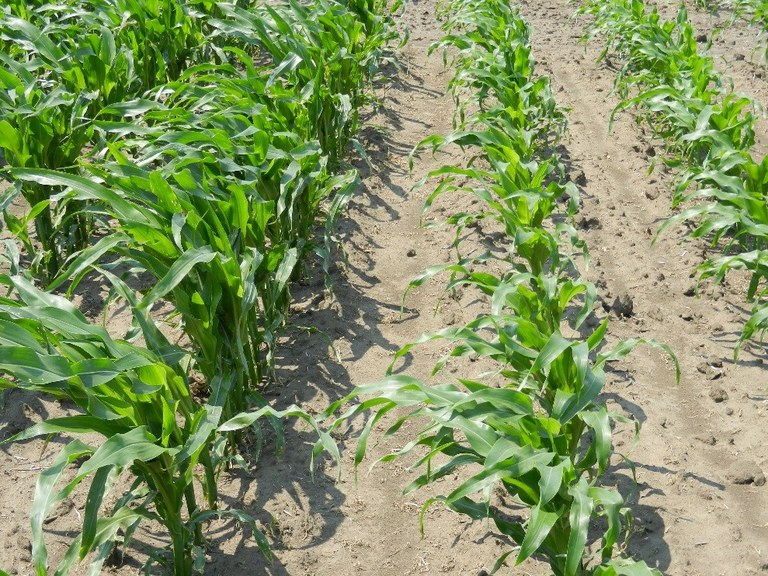Considerations for Phosphorus Application to Spring Wheat in North Dakota
Two approaches generally used to decide if and how much P to apply to crops vary by states.
The buildup (maintenance) approach: Being practiced in IA, IL, KS, etc., it recommends applying P and K fertilizer rates to raise the soil P to a critical level that is mostly high, and then in subsequent years, maintaining these levels by applying amounts equivalent to crop removal. The soil does not need to be sampled and be tested every year.
The sufficiency approach: Based on the concept that the amount of fertilizer to apply depends on the likelihood of crop yield response for soils testing low to medium. More frequent (annual) soil test is required. Involves building soil test to medium levels.
The sufficiency approach is more suitable in ND for a number of reasons:
- Economic: In the Northern Great Plains (NGP) where crop failure frequency (due to drought, high rainfall) is relatively high, it is important to fertilize the crop (sufficiency approach) rather than the soil. The goal is to maximize profit in the year of fertilizer application. The sufficiency approach is also more suitable for short-term lease of land.
- Agronomic: Yield potential is lower in the NGP due to short growing seasons, and soil salinity. Also, the soils have high capacity to fix P (retain P in soil in less available forms).
- Environment: The sufficiency approach is assumed to minimize phosphate losses and ground water contamination, compared to the buildup approach because of reduced risk of over-fertilization.
With short growing seasons, farmers begin planting at the earliest possible, when soil moisture and temperatures are adequate for their crop. Early season crops like wheat respond to starter P fertilizer (e.g. MAP) applied with or near the seeds, even for soils with high test P, especially in no-till, due to low soil temperatures, and slow SOM breakdown.
- Wheat: Banding or seed placement provide the most response. Apply 1/3 of the recommended broadcast P rates, which for a 40bu wheat are, 28 lbs P2O5 (low P), 17 lbs (medium), and 15 lbs (high soil test P). Never exceed 15 lbs P for high soil test P. Apply 14 lbs more P2O5 for every 10 bunch yield increase when soil test low, and about 9 lbs more for medium for every 10bu yield increase. The amount of P to band depends on the amount of N fertilizer used in banding.
- For corn, at 100bu apply 46 lbs P2O5 (low P), 28 lbs (medium P), and 8 lbs (high soil P). Increase P2O5 by about 26 lbs for every 50bu increase in low P, and 9 lbs P2O5 for medium P.
https://www.ndsu.edu/fileadmin/soils/pdfs/sf882.pdf
In summary, the sufficiency approach achieves short-term (annual) profits, but depends on soil sampling, analysis, and proper interpretation of the results. Crops respond to P band.
Jasper Teboh
Soil Scientist

Corn response to starter P in Carrington, ND.


